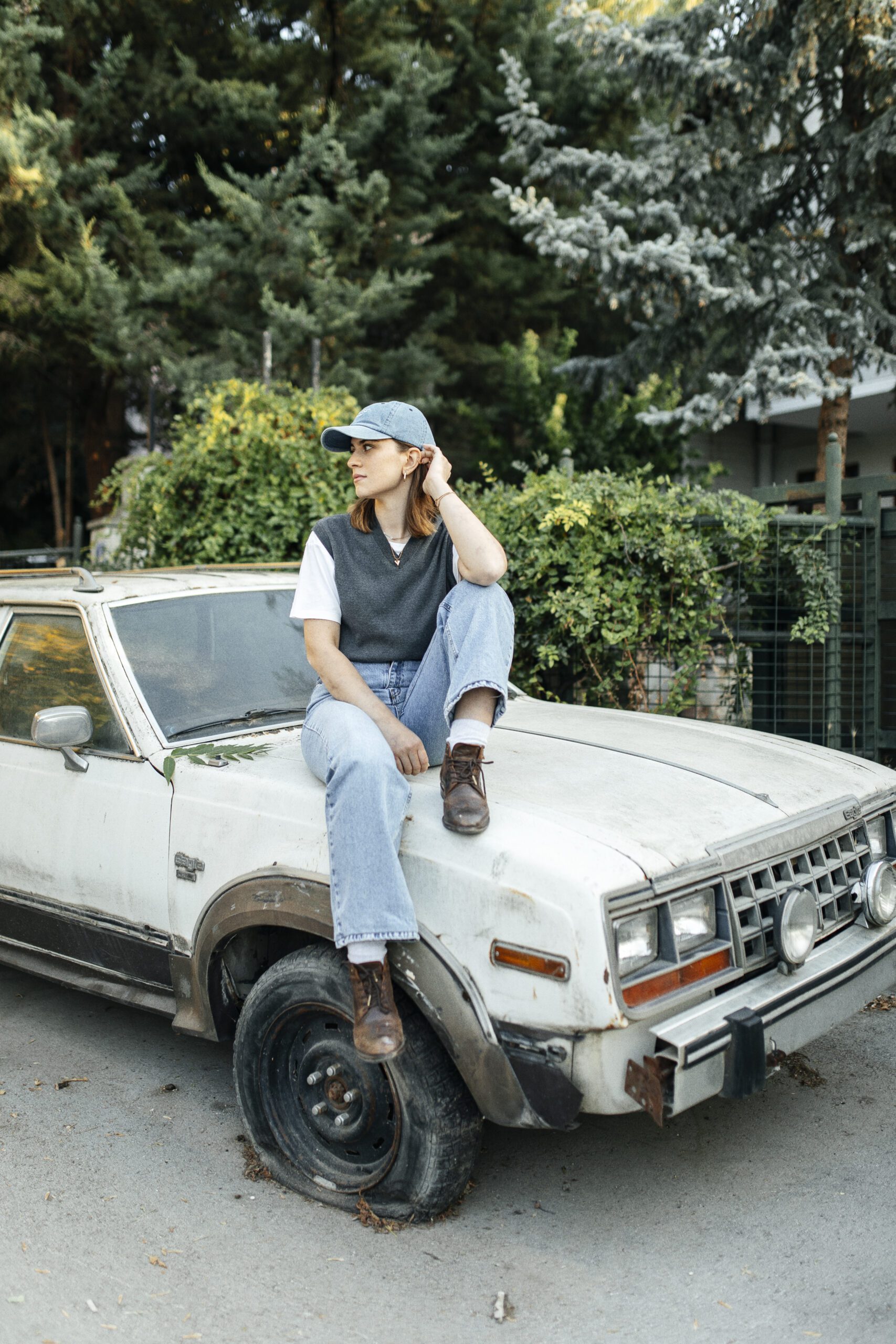If you’re a skateboard enthusiast looking to improve your riding experience, adjusting your skateboard trucks for stability and turning is a crucial step. By tinkering with the tightness of your trucks, you can achieve optimal stability for high speeds or increase maneuverability for sharp turns. In this article, we will guide you through the simple and easy process of adjusting your skateboard trucks, allowing you to enhance your overall skateboarding performance. So, grab your skateboard and prepare to take your riding to the next level!

Choosing the Right Trucks
When it comes to choosing the right trucks for your skateboard, there are a few factors you need to consider. First and foremost, you should think about your skating style. Are you into cruising around the streets or do you prefer hitting the skatepark and doing tricks? Your skating style will determine the type of trucks you should go for.
Another important factor to consider is the width of the trucks. The width of the trucks should match the width of your skateboard deck. If the trucks are too narrow or too wide, it can affect your stability and overall riding experience. So make sure to measure the width of your deck and choose trucks accordingly.
Lastly, you should understand the different truck styles available. There are two main types of trucks: traditional kingpin (TKP) and reverse kingpin (RKP). TKP trucks are commonly used for street skating and provide a more responsive feel. RKP trucks, on the other hand, are often used for downhill and cruising, offering stability at high speeds. Understanding these different styles will help you make an informed decision when choosing your trucks.
Adjusting Truck Tightness
Adjusting the tightness of your skateboard trucks is an essential part of customization. To loosen or tighten the kingpin nut, you can use a skate tool or a wrench. Loosening the kingpin nut will make your trucks feel more responsive and turn easier, while tightening it will provide stability and reduce the chances of wheelbite.
Finding the right tightness for your trucks is a matter of personal preference. Some skaters prefer looser trucks for better maneuverability, while others prefer tighter trucks for more stability. It’s recommended to start with a medium tightness and then make adjustments based on your individual preferences. Experimenting with different levels of tightness will help you find the perfect balance between stability and turning ability.
Adjusting Truck Angles
Truck angles play a significant role in how your skateboard performs. Understanding truck angles is crucial for adjusting them effectively. The angle of your trucks can be raised or lowered by using riser pads or adjusting the pivot cups. Raising the angle will provide more stability at higher speeds but can limit your turning ability. Lowering the angle, on the other hand, will increase the board’s responsiveness and allow for sharper turns.
Finding the optimal angle for your trucks depends on your riding style and personal preference. If you’re into cruising and carving, a lower angle may be more suitable. For downhill riding or stability at high speeds, a higher angle might be preferred. Again, it’s important to experiment and find what works best for you.
Replacing Bushings
Bushings are the rubber or urethane components that sit inside the truck baseplate and provide cushioning and control. Over time, bushings can wear out, affecting your skateboard’s performance. Identifying worn-out bushings is relatively easy – they might be cracked, compressed, or have lost their elasticity.
To replace old bushings, you’ll need to remove the truck’s baseplate. Using a skate tool or a wrench, unscrew the kingpin nut and remove the kingpin. Once the kingpin is out, the baseplate can be separated from the hanger, allowing you to access the bushings. Remove the worn-out bushings and replace them with new ones that match your riding style and weight.
Choosing the right replacement bushings is crucial for maintaining optimum performance. Harder bushings provide stability and are more suitable for heavy riders or those who prefer a stiffer feel. Softer bushings, on the other hand, offer more maneuverability and are ideal for lighter riders or those who prefer a more responsive ride. Consider experimenting with different bushing hardness to find what suits you best.

Experimenting with Different Setups
Skateboarding is all about customization, and experimenting with different setups can enhance your riding experience. Trying out different truck brands can give you a different feel and performance. Each brand has its own characteristics, so don’t be afraid to do some research and try out different options to find the trucks that suit your preferences.
Playing with bushing hardness is another way to fine-tune your skateboard’s performance. By adjusting the hardness of the bushings, you can customize the stability and responsiveness of your trucks. Softer bushings will allow for easier turning, while harder bushings provide more stability at higher speeds. It’s a matter of finding the right balance that matches your skating style.
Using riser pads is another option for experimenting with your setup. Riser pads are placed between the skateboard deck and trucks, increasing the distance between them. This can help prevent wheelbite, which occurs when the wheels come into contact with the deck during sharp turns. Riser pads come in different thicknesses, so you can choose the right one depending on your needs.
Balancing the Front and Back Trucks
Balancing the tightness of your front and back trucks is essential for overall stability and turning ability. If your front truck is tighter than your back truck, you’ll have better control when turning, but it may affect stability. On the other hand, if your back truck is tighter, you’ll have better stability but reduced maneuverability.
Adjusting the tightness of your trucks is simple. Using a skate tool, you can loosen or tighten the kingpin nut to achieve the desired tightness. To find the right balance, start with a medium tightness on both the front and back trucks. Pay attention to how your skateboard feels while riding and make adjustments accordingly. You might need to experiment with different tightness levels to find what works best for you.

Tips for Improving Stability
If you’re looking to improve stability on your skateboard, there are a few tips you can try. Lowering your truck angle can help increase stability, especially at higher speeds. By lowering the angle, you create a wider wheelbase, which provides more stability and control. However, keep in mind that lowering the angle too much can limit your turning ability, so it’s important to find the right balance.
Using harder bushings is another way to enhance stability. Harder bushings offer less compression, which means they provide more stability and less responsiveness. This can be beneficial if you’re riding at higher speeds or prefer a stiffer feel. Experiment with different bushing hardness to find the right level of stability that suits your riding style.
Finally, avoiding wheelbite is crucial for maintaining stability on your skateboard. Wheelbite occurs when the wheels come into contact with the deck during sharp turns, causing the board to stop abruptly. To prevent wheelbite, make sure to use riser pads if needed, and adjust your truck angles and tightness accordingly. This will help ensure a smooth and stable ride.
Tips for Improving Turning
If you’re looking to enhance your turning ability, there are a few tips you can follow. Raising your truck angle can help increase the responsiveness of your skateboard. By raising the angle, you create a narrower wheelbase, which allows for sharper and more precise turns. However, keep in mind that raising the angle too much can reduce stability, so finding the right balance is key.
Using softer bushings is another effective way to improve turning. Softer bushings compress more, which allows for easier and smoother turns. If you’re into carving and quick direction changes, softer bushings can greatly enhance your turning ability. Experiment with different bushing hardness to find the level of responsiveness that works best for you.
Preventing wheelbite is also crucial for improving turning. Wheelbite can hinder your ability to turn and can be frustrating. Make sure to use riser pads if needed and adjust your truck angles and tightness accordingly to prevent wheelbite. This will allow for smooth and unrestricted turning.
Maintenance and Regular Checks
To ensure optimal performance and safety, it’s important to regularly inspect your skateboard trucks. Check for any signs of damage or wear on the truck components. Look for cracks or dents on the baseplate, hanger, and pivot cup. If you notice any damage, it’s best to replace the affected parts to avoid any accidents or malfunctions.
Additionally, make sure to keep the nuts and bolts on your trucks tight. Loose nuts and bolts can affect the stability and performance of your skateboard. Use a skate tool or a wrench to tighten them regularly, especially before each skating session. This will help prevent any unexpected issues while riding.
Lastly, replacing damaged or worn-out parts is essential for maintaining the longevity of your skateboard. If you notice any issues with your trucks, such as excessive wobbling or reduced responsiveness, it may be time to replace certain components. Consult with a skate shop technician or experienced skaters to guide you in selecting and installing the right replacement parts.
Seeking Professional Help
While adjusting your skateboard trucks can be done on your own, it’s always helpful to seek professional help if needed. Skate shop technicians have extensive knowledge and experience in skateboard customization and tuning. If you’re unsure about making adjustments or want expert advice, don’t hesitate to consult a skate shop technician. They can guide you in choosing the right trucks, bushings, and other components to match your skating style and preferences.
Another valuable source of guidance is experienced skaters. They have firsthand knowledge and can provide valuable insights and tips based on their own experiences. Reach out to experienced skaters in your community or join skateboarding forums to connect with like-minded individuals who can offer guidance and support.
Lastly, if you’re looking for a comprehensive tuning and customization service, consider professional tuning services. Some skate shops or specialized companies offer professional tuning packages that include adjusting trucks, bushings, and other components to meet your specific needs. These services are especially useful if you’re new to skateboarding or want a hassle-free way to achieve the desired performance from your skateboard.
In conclusion, adjusting your skateboard trucks for stability and turning is a crucial part of customization. Consider your skating style, choose the right trucks and bushings, and experiment with different setups. Regularly inspect and maintain your skateboard trucks to ensure optimum performance and safety. Seek professional help if needed, and above all, enjoy the process of fine-tuning your skateboard to match your individual preferences and riding style. Happy skating!
